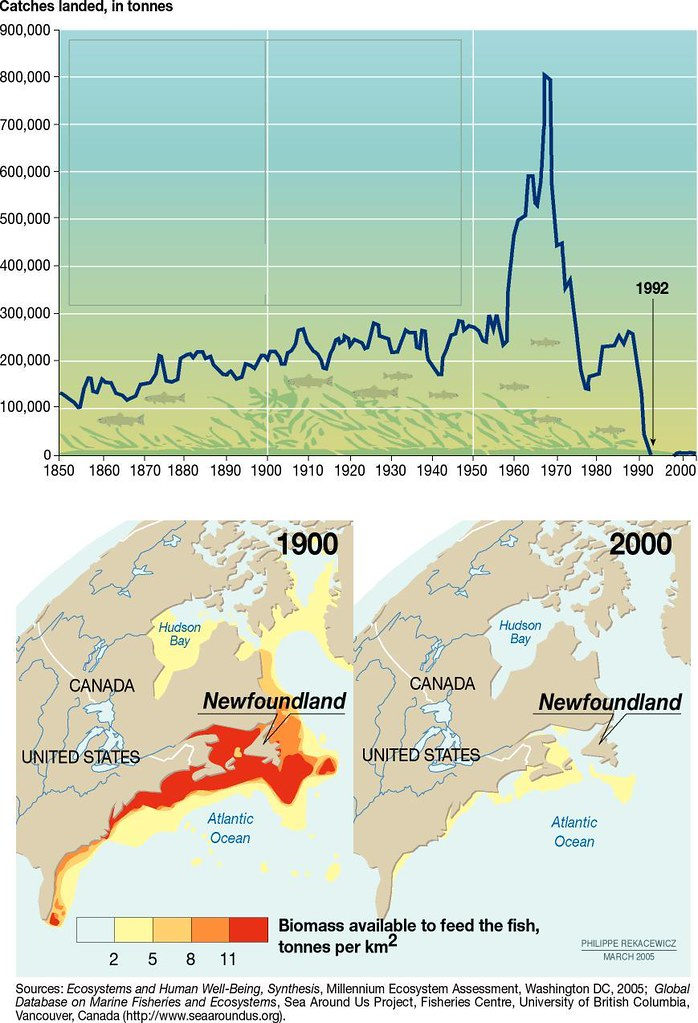AQA Specification focus:
‘The tragedy of the commons. Students should appreciate the relevance of the ‘tragedy of the commons’ for environmental market failures.’
Introduction
The tragedy of the commons highlights how individuals pursuing self-interest can overuse shared resources, leading to depletion and inefficiency. This concept is crucial for understanding environmental market failures.
Understanding the Tragedy of the Commons
Definition of the Tragedy of the Commons
Tragedy of the Commons: A situation where individuals exploit a shared resource independently and rationally according to their own self-interest, leading to overconsumption and depletion of that resource.
This concept was popularised by Garrett Hardin (1968), who illustrated how shared grazing land could be overused by herders, as each individual sought private benefit from adding more cattle while the costs of overgrazing were shared by all.
Characteristics of Common Resources
Key Features
Common resources are distinguished by:
Rivalry in consumption: One person’s use reduces availability for others.
Non-excludability: It is difficult or impossible to exclude others from using the resource.
These characteristics mean users lack the incentive to conserve or use the resource efficiently.
Common Resource: A type of good that is rival in consumption but non-excludable, leading to potential overuse.
Unlike private goods, where ownership rights are clear, common resources are vulnerable to mismanagement.
Why the Tragedy Occurs
Incentive Structures
The tragedy arises because:
Individuals receive private benefits from exploiting the resource.
The costs of overuse are distributed across all users.
There is no effective mechanism to enforce sustainable usage.
This results in over-consumption and ultimately the depletion of the resource.
The Role of Property Rights
Without well-defined property rights, users lack accountability for the consequences of their consumption. Establishing ownership or management systems can sometimes mitigate the tragedy by aligning private incentives with social outcomes.
Environmental Relevance
Key Examples of Environmental Commons
The tragedy of the commons is especially relevant to environmental economics, where many resources display common characteristics:
Fisheries: Overfishing depletes stocks, threatening long-term sustainability.
Forests: Deforestation occurs when logging rights are unregulated.
Air and atmosphere: Pollution occurs because firms and individuals face no immediate cost for emissions.
Oceans: Acidification and plastic pollution reflect unregulated access.
In each case, private use ignores wider social costs, leading to market failure.
Fisheries are a canonical environmental commons where open access can lead to stock collapse.

Graph of the decline of cod stocks in the North Atlantic, illustrating how individual incentives in a common-pool resource can drive catches beyond sustainable levels. This provides a concrete, real-world case of the tragedy of the commons. The accompanying map offers contextual geography (additional background beyond AQA requirements). Source
Linking to Market Failure
Misallocation of Resources
Market failure occurs when resources are not allocated efficiently. In the tragedy of the commons, overuse represents a misallocation, as the resource is consumed excessively compared to the socially optimal level.
Market Failure: A situation where free markets fail to allocate resources efficiently, leading to welfare loss.
Negative Externalities
The tragedy of the commons can be viewed as a form of negative externality, since individual consumption imposes costs on others that are not reflected in market prices.
Diagrammatic Explanation
Marginal Cost and Benefit Framework
To illustrate, economists use marginal social cost (MSC) and marginal private cost (MPC) diagrams:
At the individual level, consumption is based on marginal private benefit (MPB) and MPC, ignoring wider costs.
At the societal level, MSC exceeds MPC because of external damage.
The free market equilibrium leads to over-consumption, while the socially optimal point lies at lower usage where MSB = MSC.
This graphical approach reinforces how the tragedy of the commons represents a market failure through externalities.
Economists illustrate the misallocation from common-resource overuse using MSC, MPC and MSB/MPB diagrams.

A demand–supply diagram showing a negative externality: the marginal social cost (MSC) curve lies above marginal private cost (MPC), so market output exceeds the social optimum. This visual underpins why open-access commons are over-used. The shaded loss/wedge interpretation follows directly from the gap between MSC and MPC. Source
Policy Responses to the Tragedy
Possible Solutions
Governments and institutions attempt to mitigate the tragedy by:
Establishing property rights: Assigning ownership to incentivise conservation.
Regulation: Quotas, bans, or permits to limit exploitation.
Tradable pollution permits: Allowing firms to buy and sell emission rights to reduce overall output to a sustainable level.
International agreements: Collaboration on global commons, such as the Paris Agreement on climate change.
Challenges in Application
Enforcement is often costly and complex.
International commons (e.g., oceans, atmosphere) require coordination across nations.
Regulatory capture and weak institutions can undermine effectiveness.
Environmental Significance
The tragedy of the commons explains why environmental resources are prone to overuse and why government intervention is often necessary to correct market failure. It directly links to issues of sustainability, climate change, and the long-term welfare of societies, highlighting that left unregulated, markets alone cannot preserve shared environmental goods.
FAQ
Both involve non-excludable resources, but the tragedy of the commons relates to overuse of rival resources (e.g., fisheries), while free-rider problems apply to non-rival resources (e.g., national defence).
In the tragedy of the commons, depletion occurs because consumption directly reduces what is left for others. In contrast, free-riding occurs when people benefit without contributing to provision.
Global commons like the atmosphere or oceans often require cooperation beyond national governments. International organisations:
Negotiate agreements (e.g., UN climate accords).
Provide monitoring and data collection.
Offer enforcement frameworks and sanctions.
These efforts aim to align national incentives with sustainable global outcomes, though success depends on compliance.
Greenhouse gas emissions are non-excludable and rival in effect, as one country’s emissions reduce the environmental quality available to others.
Each nation benefits privately from production but shares the cost of climate change globally. This mirrors the tragedy of the commons, requiring cooperative solutions such as emissions targets and tradable permits.
Local communities can sometimes manage shared resources more effectively than central governments. Mechanisms include:
Agreed rules on access and quotas.
Monitoring by the community itself.
Social pressure and reputational enforcement.
These arrangements succeed when trust and local accountability are strong, aligning incentives for sustainable use.
Montreal Protocol: Global agreement reduced CFCs, protecting the ozone layer.
Iceland’s fisheries system: Quotas and tradable permits prevent overfishing.
Community forest management in Nepal: Locals regulate timber use to maintain resources.
These examples show that with clear rules and enforcement, common resources can be preserved without collapse.
Practice Questions
Define the term ‘tragedy of the commons’ and explain why it can lead to market failure. (2 marks)
1 mark for a clear definition: a situation where individuals, acting in their own self-interest, overuse a common resource, leading to its depletion.
1 mark for linking to market failure: overuse results in misallocation of resources and welfare loss.
Using a relevant example, explain how the tragedy of the commons can be illustrated with marginal cost and benefit analysis. (6 marks)
1–2 marks: Identification of the tragedy of the commons as overuse of a common resource (e.g., fisheries, forests, atmosphere).
1–2 marks: Explanation that private users consider marginal private costs/benefits but ignore wider social costs.
1–2 marks: Use of diagrammatic explanation or verbal description showing marginal social cost (MSC) above marginal private cost (MPC), leading to over-consumption compared with the socially optimal level.
Maximum 6 marks for a full, coherent explanation that integrates an example with economic analysis.

